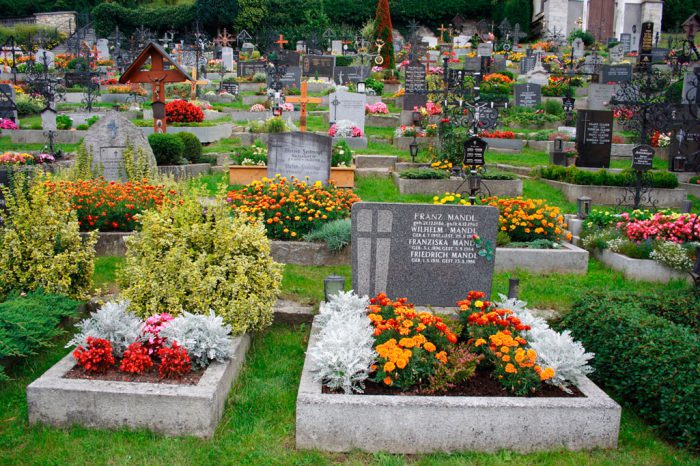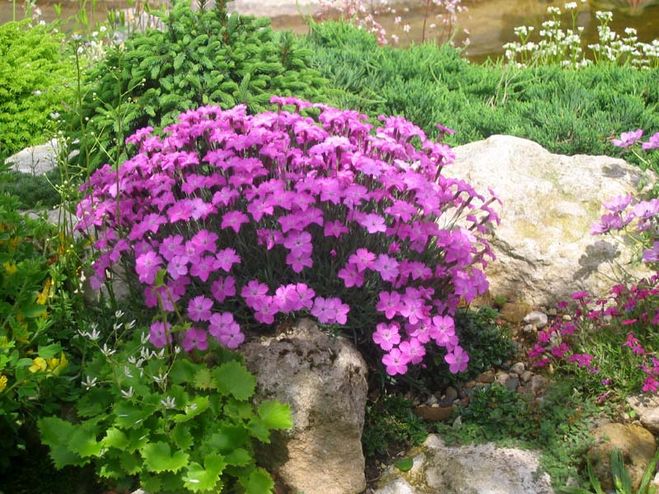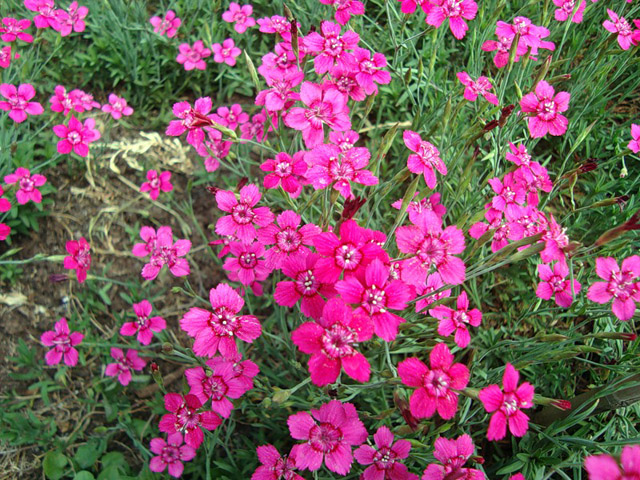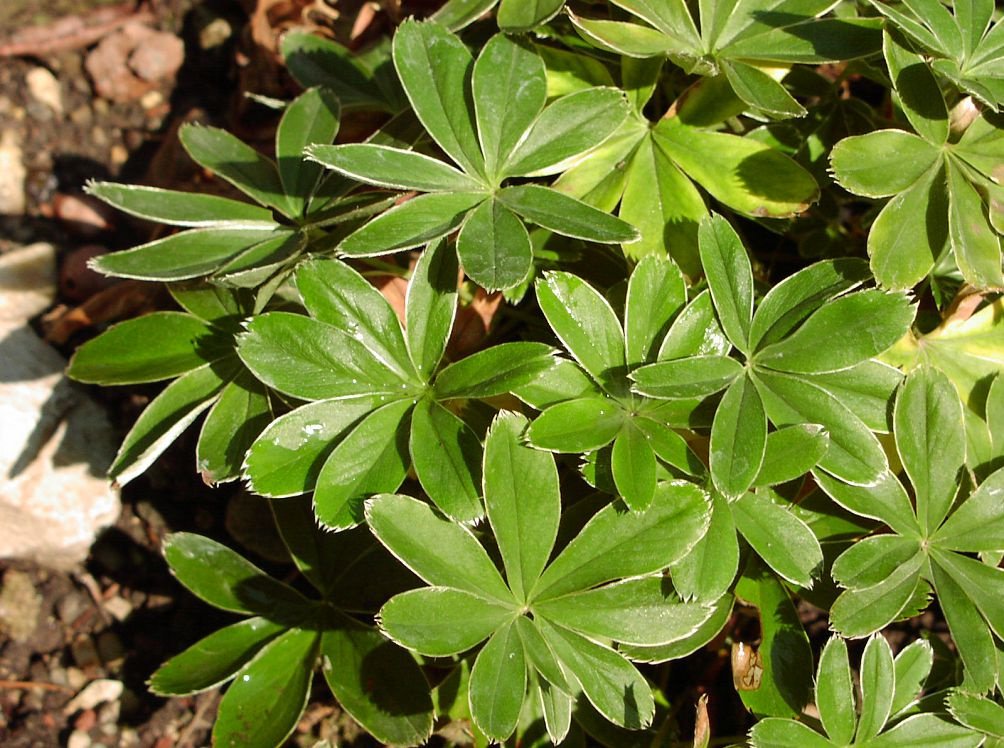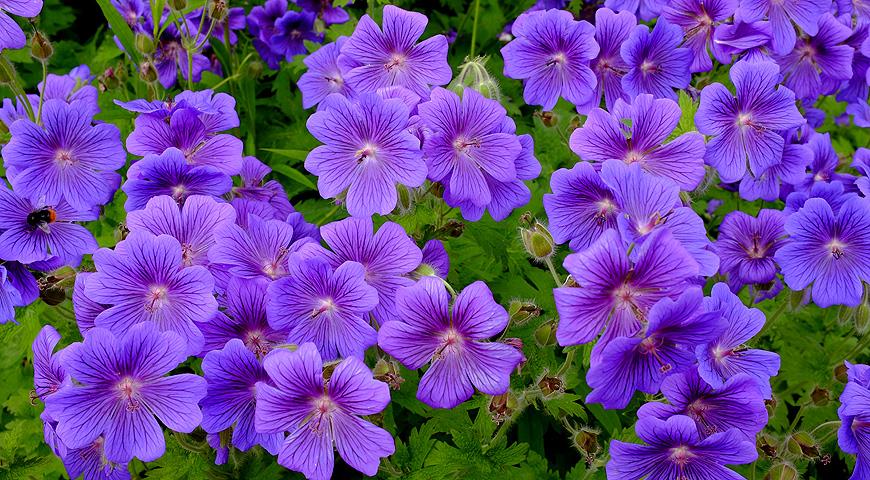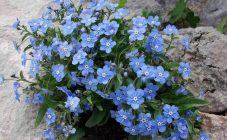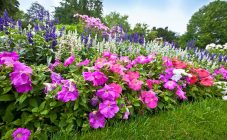Content:
Since ancient times, people have honored the memory of the dead by placing flowers on the graves. Some bring in their hands live, cut or artificial bouquets, others prefer to break up flower beds of beautiful perennials, which belong to the group of unpretentious crops, drought-resistant and shade-tolerant. Therefore, the question arises as to what flowers can be planted in a perennial cemetery.
Perennial flowers on the grave
Plants that can be planted on graves and around the territory of the cemetery have one thing in common: expressive beauty, at the same time simplicity and discreet form.
If you want to grow flowers on the grave, remember that it is not pretentiousness and showiness that is important here, but a sense of tact and proportion.
The color palette is of great importance. It is preferable to choose the main color silvery green and green. Accents are set using blue, red or pink. Warm sunny colors can also be used, but are rarely chosen.
First of all, when choosing plants, they are guided by an emotional factor, but one should also not forget about practicality, since crops have to develop and grow in a limited space. Most often in cemeteries there are sandy and sandy loam soils. Often there is no way to provide the required degree of loosening and drainage. This largely determines the answer to the question of what perennial flowers can be planted on the grave.
Considering all the features of the conditions, we can conclude that the flowers that are planted in the cemetery must have the following qualities:
- The ability to quickly adapt to adverse conditions, including frost.
- Plants should be equally successful in coping with drought and excess moisture, since it is beyond the power of humans to control the mass of precipitation.
- Perennial flowers in a cemetery should not be picky about the composition and characteristics of the soil.
- Disease and pest resistance.
- Vitality and unpretentiousness.
Forage of all the above qualities, crops for planting in a cemetery should not require transplantation and division, the introduction of special frequent fertilizing. It is important that the planted crop looks beautiful not only during flowering, but also during the rest of the period.
Description of popular flowers for the cemetery
When choosing crops for planting on or near a grave, the first step is to determine the type of soil. This will help answer the question of what perennial flowers to plant in the cemetery so that they bloom all summer. The type of area illumination is very important. If this is an open area, then it is preferable to plant sun-loving plants. For burials that are located near trees or buildings, shade-loving and shade-tolerant crops should be chosen.
Carpet plants
Cultures weaving along the surface of the soil look very beautiful on the graves; gradually they will grow and form a carpet.
A suitable plant for a cemetery is Borvinok. From the very beginning, the plant is covered with cute blue flowers. At the same time, the grave is covered with beautiful greenery. The disadvantage of this culture is its rapid growth; neighboring graves may begin to cover with borvinka.
Bunch flowers
Flowers that grow in bunches are good for planting in a cemetery. Among the most popular flowers are daffodils and iris.
Such bunch flowers are placed as close to each other as possible, leaving practically no distance between them. But these plants bloom in early spring, by the end of June there is just greenery.
Pansies
A short flower that looks simply divine. This is a small bush (15-30 cm). Pansies offer a wide variety of colors. The main advantage of this culture is the long flowering period. They bloom at the end of April and delight with their beauty until the end of autumn.
Anemone, or Anemone
This is another long-flowering crop that has a large number of varieties. The undersized representatives should include the tender and ordinary anemone. This is a charming primrose that will delight you with flowering by the end of April. True, it will stop in three weeks, and the leaves will disappear by the end of May.
Tender anemone will delight you with white inflorescences reminiscent of chamomile. No less beautiful is the common anemone, represented by purple, red or white bells. Among the people, the common anemone is often found under the name primrose.
Carnation herb
These are perennial garden carnations, the height of the stems of which does not exceed 30 cm. Due to the thin delicate stem, the plant tends to adhere, which contributes to the formation of beautiful meadows. The flowers of this variety are not large in size, but they come in a variety of colors, ranging from white to bright red.
It is unpretentious in care, it survives cold winters well. The seeds of the plant sprout well, and the culture also has a tendency to self-sowing.
Turkish carnation
The bright flowers of a garden carnation with jagged edges will decorate any flower garden of the grave with their flowering from the beginning of June. The flowers themselves are small in size, but collected in beautiful inflorescences. Flowering lasts from early June to late September. The height of the plant depends on the variety: from 40 to 60 cm. It grows well in sunny places and shaded areas.
Phlox
A very attractive option for a cemetery will be the thyroid phlox, the height of which does not exceed 15 cm. The plant spreads, forms beautiful early flowering meadows.
Another variety of this crop that can be used in a flower garden in a cemetery is sod phlox. These can be soil-covering varieties or flowers growing in bushes.
The plant grows with equal success in the sun and partial shade, but most of all it loves sunny temperate areas. To organize a long flowering, you will need to remove dry inflorescences in a timely manner. Also, the advantages of this perennial are unpretentious care and good frost resistance.
Cuff
A low plant (up to 45 cm) has spherical inflorescences of calm tones. In addition to beautiful flowering, funnel-shaped leaves are very attractive. They have the ability to retain water droplets on their surface. In the center of the dropped leaf in the early morning, dew drops remain, forming silvery balls.
The cuff blooms from June to August. With the timely removal of dry inflorescences, re-flowering is possible in September.If you place the cuff next to early flowering crops, you will be able to hide their withering leaves with the beauty of this pleasant ball-shaped flower.
Crocuses
Another early flowering unpretentious flowers that are often found in cemetery beds. The plant is grown with bulbs that can withstand winter. Low plants bloom from March to May, appearing almost from under the snow. They grow equally well under the crown of trees in partial shade or in sunny areas.
Tulip
An equally common flower that pleases with early flowering and is practically one of the most unpretentious plants. Thanks to the thousands of different varieties of these flowers, great compositions can be created. You can also organize long-term flowering by selecting bulb varieties with different blooming periods.
Geranium
A very beautiful perennial, which will delight not only with beautiful flowers in summer, but also with no less beautiful decorative foliage after flowering. The height depends on the species (from 10 cm). The plant does not have any special requirements for soil and germination conditions. Feels great in the sun and shade.
Nivyanik
Chamomile is considered the symbol of Russian open spaces, which grows on various soils and under various weather conditions. Beautiful baskets rise to a height of 30 to 100 cm. Loves nutritious loose soil, but even with a lack of moisture and drought, it grows well, although the flowering will be smaller and not so abundant.
Rules for decorating flower beds on the grave
When decorating graves, everyone should adhere to the fact that a cemetery is a place of light, quiet sadness. Accordingly, the design should be chosen. The main rule for decorating flower beds on the grave is moderation. The same rules should be applied to flower gardens. If, when decorating flower beds in a summer cottage, they try to emphasize a riot of colors, a style of severity and restraint is chosen on the graves.
Perennial flowers for the grave are offered in a wide range. Thanks to the competent selection of species and varieties, you can get integral beautiful restrained compositions. All plants that can be used for graves can be divided into 3 groups:
- framing;
- forming a lawn;
- seasonal.
If the site is divided into three parts, then the following distribution of landings should be performed:
- framing - 25%;
- seasonal - 10;
- lawn - and ground cover - 65%.
Sometimes it is impossible to decorate the grave with beautifully flowering plants due to climatic conditions and soil characteristics. In this case, you should choose unpretentious perennials.
When choosing perennial flowers for graves, you should be guided by the time when you visit the cemetery. It is best to choose crops that will delight with flowering at this particular time.
Caring for flowers in a cemetery
Since non-capricious varieties are preferable for the cemetery, the care in the growing process will be minimal. It will consist of planting, weeding and loosening the soil. If possible, water the plant during dry periods. It will not interfere with crops and feeding, so that they have enough strength to delight with their lush flowers.
As you can see, with the right choice of crops for planting in a cemetery, you can get beautiful flowering flower beds throughout the season. The main rule for decorating a cemetery is a moderate choice of colors and a correctly selected color palette that will correspond to the atmosphere of the memory of the deceased and light sadness.
